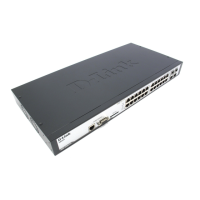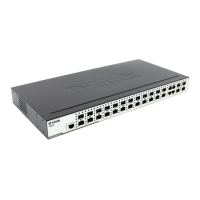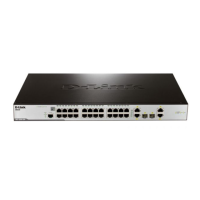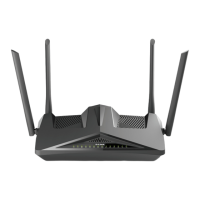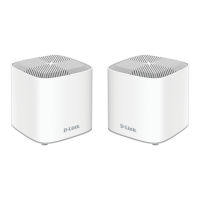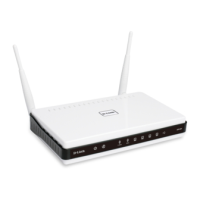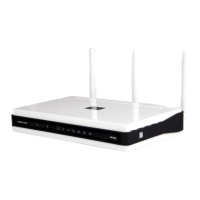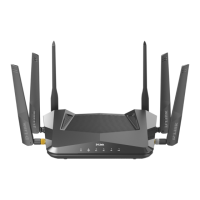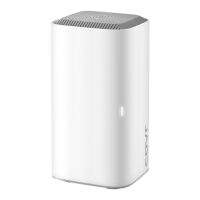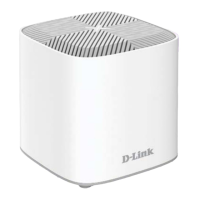
Do you have a question about the D-Link xStack DGS-3426G and is the answer not in the manual?
| MAC Address Table | 8K |
|---|---|
| Power Supply | Internal Power Supply |
| RAM | 128 MB |
| Flash Memory | 16 MB |
| Layer | Layer 2+ |
| Humidity | 10% to 90% non-condensing |
| VLAN Support | Up to 4K VLANs |
| Jumbo Frame Support | Yes, up to 9K bytes |
| Management | Web-based GUI, CLI, SNMP, RMON |
| QoS Support | Yes |
| Operating Temperature | 0°C to 50°C (32°F to 122°F) |
| Ports | 24 x 10/100/1000BASE-T, 2 x 1000BASE-X SFP |
| Dimensions | 440 x 260 x 44 mm (17.3 x 10.2 x 1.7 inches) |
| Storage Temperature | -20°C to 70°C (-4°F to 158°F) |
Instructions on accessing the switch's management interface through a web browser using its IP address.
Explains how to configure the switch's IPv4 address, subnet mask, and default gateway via the web manager.
Covers the setup of IP interfaces for both IPv4 and IPv6, including adding and modifying settings.
Covers the configuration of individual switch ports, including state, flow control, and speed/duplex settings.
Covers Virtual LANs, their description, notes, and IEEE 802.1Q VLAN standards.
Details the three Spanning Tree Protocol versions: 802.1D, 802.1w Rapid STP, and 802.1s MSTP.
Establishes criteria to determine packet forwarding based on header information like MAC or IP address.
Secures ports by locking learned MAC addresses, preventing unauthorized device access.
Restricts client access by binding MAC and IP addresses to specific switch ports.
Provides port-based and host-based access control using RADIUS for user authentication.
Configures 802.1X authenticator settings on the switch, including port-specific parameters.
Authenticates users trying to access the Internet via the switch using HTTP protocol.
Allows users to secure switch access using TACACS, XTACACS, TACACS+, and RADIUS protocols.
Allows configuration of MAC addresses for authentication and access rights based on target VLANs.
Provides secure remote login and network services over an insecure network using encryption.
Allows viewing various packet statistics as a line graph or table, including received and transmitted data.
Provides port error statistics, viewable as line graphs or tables for received and transmitted data.
Details how to use Packet Content ACL to mitigate ARP spoofing by blocking invalid ARP packets.
